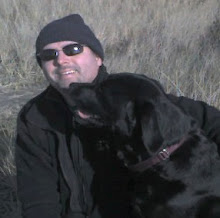I've mentioned this a few times over the last 2 years, the changing landscape of our business, and the major technological advances made in the entertainment industry since my arrival here in 1997.
This article from Wired is about one of my favorite current subjects, the RED camera.
I was fortunate enough to be on the frontend of the digital cinema revolution here in Hollywood, with one of my first producing jobs being the Sundance film fest short, shot by
Allen Daviau; where we shot with the then "new" Sony VX1000 MiniDV camera in PAL format for an experimental short film that ended up at the Sundance Film Festival in 2001.
"Sweet" was my second producing job ever, following on the heels of an over-inflated 20 minute short film shot on SUPER35mm film where the filming and post production were both challenging, slow, and about as expensive as you could get working in film. The opportunity to work on "Sweet," as I look back, really did seem like a coming-of-age moment. If I remember right, it was that year that Apple's Final Cut Pro first came out as well.
This was the year I was still working at
New Line Cinema in post production where we still would use a
sync block and a
film splicer to cut film and then tape it back together, and a flatbed to view it on. I was 24. To be fair, this stuff was on the way out, and Avid's were fully in use. The fact remained that we had this gear in the offices and it was used.
This was also the year
The Orphanage first began testing their "film look" process as a service that eventually made it's way to a plug-in for software. Their major contribution to the film is reflected in their "presenting" credit to this day on "Sweet."
While what we achieved with that film was just a sliver of what RED now represents, it's encouraging to finally see our industry really embrace this type of change. I hope someday soon the productivity and cost/benefit gains that this camera represents will extend into the actual physical production processes that happen at the organizational level of making films & television. We're still struggling with antiquated, crummy software that doesn't allow for quick, easy, cross platform sharing of the information we use to schedule and budget projects. Those budgets and schedules are often the things that make a project work, or fail, and well... we're still failing there. (side note: There are a few options for this, but they are expensive, and kludgy; this is, of course, something I've been working on for some time, and there's good stuff happening behind-the-scenes:)
It's interesting to see RED finally hit the mainstream (if WIRED is mainstream? I like to think so...), and it will be a gamechanger for Panavision and Sony. Thankfully, Kodak saw the writing on that wall a couple of years ago and began realigning it's businesses appropriately. (though I never will forget one of the preeminent film labs in town taking Allen and I out to a Lakers game with some sweet box tickets and treating us to an awesome dinner (thanks John!) and talking about how Allen liked to call up Kodak and ask for specific emulsions on his film stock to experiment with...).
Only 4 months ago, I was approached by two new-to-Hollywood young filmmakers contemplating their first short film project who were looking for an "old hand" to guide them through their production. Their first undertaking? They had gotten on the waiting list and bought their own first full RED package, lenses, support gear, and all. No more begging for free or discounted gear from Panavision or Arriflex (Otto Nemenz) they were out to produce their own cinema quality films, on their own terms. I hope, and believe we'll only see more of this.
Personally, I can't wait to buy my first RED package one of these days (though by that time, it'll likely be 6k, or 8k...).
Panavision Camera? $25,000/month to rent
Red Camera? $17,500 to own
A new generation of storytellers with the tools to tell their own stories in grand cinematic vision?
Priceless.
Labels: digital cinema, next generation, RED camera


